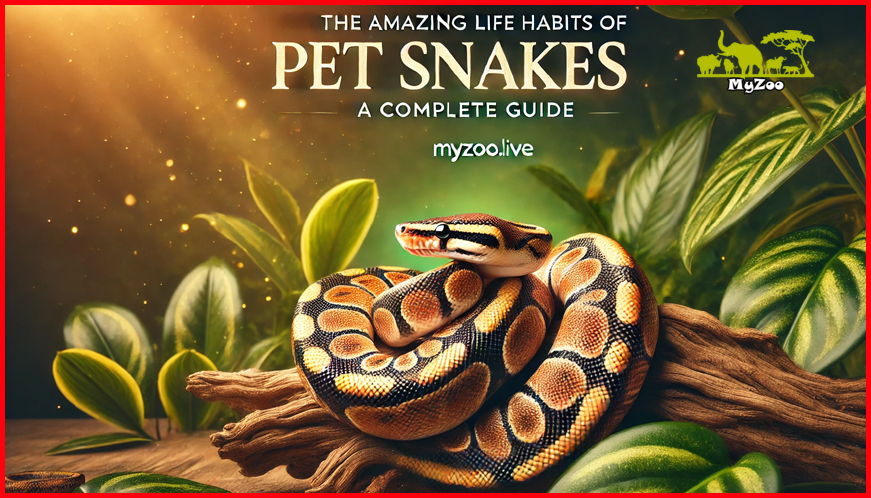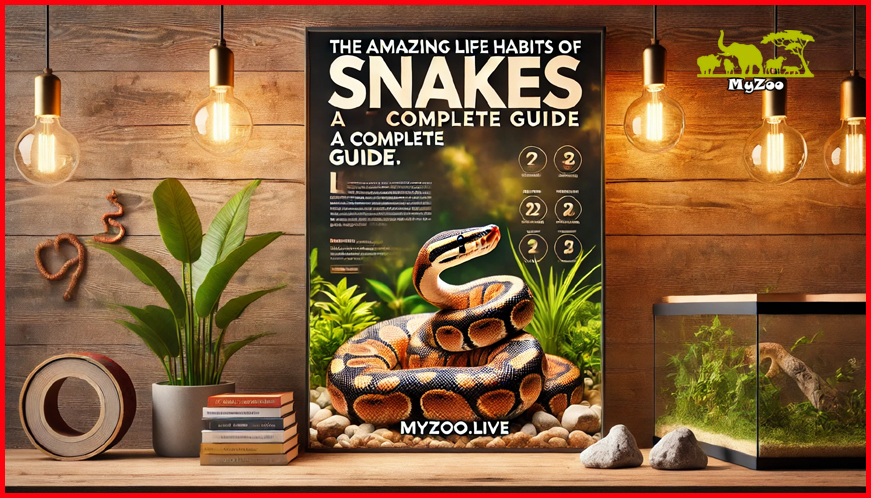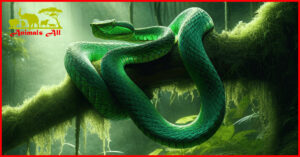
The Amazing Life Habits of Pet Snakes: A Complete Guide
Snakes have fascinated humans for centuries, captivating reptile enthusiasts with their unique behaviors, silent movements, and intriguing survival instincts. As exotic pets, snakes exhibit fascinating life habits that make them low-maintenance yet highly rewarding companions. This blog will explore the amazing life habits of pet snakes, from their feeding patterns to their unique behaviors, shedding cycles, and habitat preferences. Whether you are a new snake owner or a seasoned reptile enthusiast, this guide will offer valuable insights into your slithery companion’s world.
1. The Secretive Nature of Pet Snakes
Snakes are naturally elusive creatures. In the wild, they rely on their ability to hide and camouflage to avoid predators. Pet snakes exhibit the same behavior by burrowing under substrate, hiding in enclosures, and avoiding unnecessary exposure. Understanding their need for privacy is crucial in providing them with a comfortable environment.
Key Takeaways:
- Snakes feel safe in enclosed, dark spaces.
- Providing hiding spots in their enclosure reduces stress.
- Overhandling can cause anxiety and disrupt their natural habits.
2. Unique Eating Habits and Diet Preferences

Unlike many other pets, snakes do not require daily feeding. Their metabolism varies based on species, size, and age. Some pet snakes eat once a week, while others may go weeks without food. Their diet primarily consists of rodents, but some species consume fish, birds, or insects.
Feeding Frequency by Snake Type
| Snake Species | Feeding Frequency | Preferred Diet |
|---|---|---|
| Ball Python | Every 7-10 days | Mice, rats |
| Corn Snake | Every 5-7 days | Mice, chicks |
| Boa Constrictor | Every 10-14 days | Rats, rabbits |
| King Snake | Every 5-7 days | Rodents, eggs |
| Garter Snake | Every 2-4 days | Fish, worms |
Important Feeding Tips:
- Always feed pre-killed prey to prevent injury.
- Use feeding tongs to avoid accidental bites.
- Provide fresh water daily.
3. The Intriguing Shedding Cycle
Shedding, or ecdysis, is an essential part of a snake’s life. Young snakes shed more frequently than adults, usually every few weeks, while mature snakes shed every few months.
Signs That a Snake is About to Shed:
- Dull or milky-colored eyes.
- Skin appears faded or loose.
- Decreased appetite.
- Increased hiding behavior.
Shedding Process Explained:
- The snake’s skin becomes dry and opaque.
- The outer layer starts peeling, usually beginning at the head.
- The snake rubs against objects to loosen the skin.
- The entire skin is shed in one piece.
- The new, vibrant skin is revealed.
How to Help:
- Maintain proper humidity levels (50-70% depending on the species).
- Provide a rough surface for rubbing.
- Avoid handling during the shedding process.
4. Nocturnal vs. Diurnal Behavior
Some pet snakes are nocturnal, meaning they are active at night, while others are diurnal (active during the day). Understanding your snake’s activity cycle helps in adjusting feeding and interaction times.
| Snake Species | Activity Type |
| Ball Python | Nocturnal |
| Corn Snake | Diurnal |
| Boa Constrictor | Nocturnal |
| Garter Snake | Diurnal |
5. Temperature Regulation and Thermoregulation

Snakes rely on external heat sources to regulate their body temperature, as they are ectothermic reptiles.
Temperature Requirements:
- Warm side of the enclosure: 85-90°F (29-32°C)
- Cool side of the enclosure: 75-80°F (24-27°C)
- Basking spot: 90-95°F (32-35°C)
Thermoregulation Tips:
- Provide a heat lamp or under-tank heater.
- Use a thermostat to maintain proper temperature.
- Never place heat sources inside the enclosure to prevent burns.
6. Social or Solitary? Understanding Snake Interactions
Most pet snakes prefer a solitary life. Housing multiple snakes together can lead to stress, aggression, or even cannibalism in some species.
Best Practices for Housing:
- Keep snakes in individual enclosures.
- Provide separate feeding areas if housing multiple snakes temporarily.
- Observe for signs of stress, such as excessive hiding or refusal to eat.
7. Habitat Preferences and the Importance of Enclosures
A well-maintained enclosure mimics a snake’s natural habitat and supports healthy behavior.
Essential Elements of a Snake Enclosure:
- Substrate: Aspen shavings, coconut fiber, or reptile carpet.
- Hiding spots: At least two (one in warm and one in cool areas).
- Humidity levels: Adjusted based on species (50-80%).
- Climbing branches: For arboreal (tree-dwelling) species.
- Water bowl: Large enough for soaking but not too deep.
8. Common Snake Behaviors and Their Meanings
- Flicking tongue: Exploring surroundings.
- Coiling tightly: Defensive posture.
- Tail rattling (even in non-rattlesnakes): Sign of stress.
- Soaking in water bowl: Preparing to shed or cooling down.
9. Handling and Bonding with Your Pet Snake
Snakes do not form traditional bonds like mammals, but they recognize their owners through scent and handling routines.
Safe Handling Tips:
- Wash hands before and after handling.
- Support the snake’s body properly.
- Avoid handling after feeding or during shedding.
- Limit handling to 10-15 minutes per session.
10. FAQs About Pet Snake Habits
Q: How often should I clean my snake’s enclosure?
A: Spot clean daily and deep clean monthly.
Q: Can pet snakes recognize their owners?
A: They recognize scent and associate it with safety.
Q: Why is my snake refusing to eat?
A: Possible reasons include shedding, stress, or improper temperature.
Conclusion
Understanding the amazing life habits of pet snakes ensures they live a healthy, stress-free life. By providing the right habitat, diet, and care, you can enjoy the rewarding experience of keeping a snake as a pet. Do you have any personal experiences with pet snakes? Share your thoughts in the comments below!

